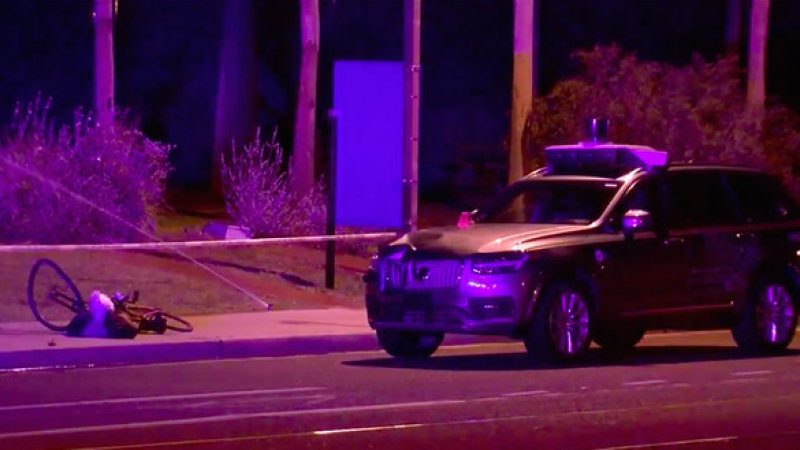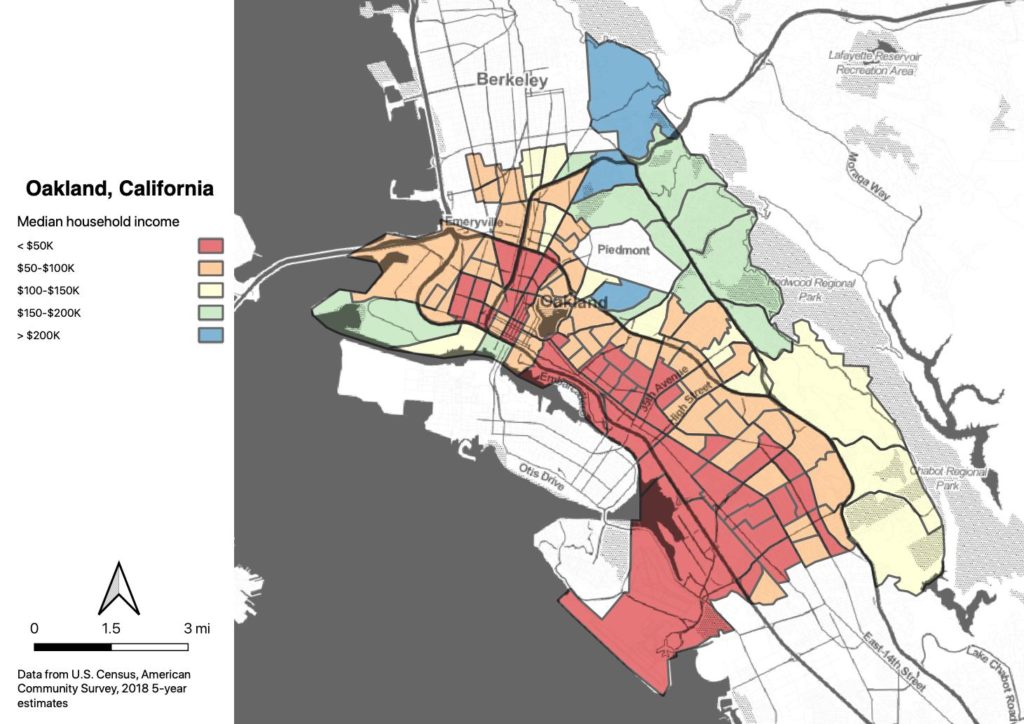In 2016, Oakland created a new Department of Race and Equity, charged with creating “a city where our diversity is maintained, racial disparities have been eliminated and racial equity has been achieved.”
In Oakland, that’s a big ask. But the creation of the office is, I think, an honest attempt to look for ways to improve the situation. One of their early initiatives provides priority in licenses for now-legal cannabis shops to people whose families have been impacted by cannabis-related incarceration. A few business licenses can’t reverse the effects of decades of mass incarceration, but most people who hear about the program think it’s creative and interesting.
The department has just released its first Equity Indicators Report, and as you might expect, Oakland fails on a number of important indicators related to equity. One of those is pedestrian safety, which scores a 1 out of 100 on the equity scale, with majority Asian neighborhoods (Chinatown, predominantly) having over 30% of their streets listed as having the highest rates of pedestrian injuries, compared with 2.3% of majority White neighborhoods. I have some issues with their methodology, mostly that it doesn’t account for exposure (there are a lot more people walking in Chinatown than Upper Montclair). But I’m more interested in noting the overall context of the pedestrian risk indicator in this voluminous and detailed analysis.
The report is 160 pages long; pedestrian safety takes about a page and a half of that (call it 1%). It is one of 12 indicators which rate 1/100 on the equity scale, the others falling under Public Safety (policing/incarceration), Public Health, Education and Housing. Overall it is one of 72 indicators used in the report.
The combined score for the topic area (Neighborhood and Civic Life) is 50.6/100, actually the highest of the six topic areas despite including a 1/100 on the pedestrian safety indicator. By comparison, Education scores 29.0/100, Public Health is 25.8/100 and Public Safety is 17.3/100.
We often frame pedestrian and bike safety issues as a moral imperative (especially under Vision Zero). And we should make our streets safer. But this analysis shows that in these communities, there are many other moral imperatives competing for attention and funding, and traffic safety is probably not near the top of their concerns.
I often talk with bike advocates about these issues, and a common response in two parts is:
- “I hadn’t thought about it that way before, I totally get why that’s an issue.”
- “So how do we convince them to support our project?”
They’re asking the wrong question. The question should be, “how do we get a better understanding of what these communities need?” And the answer is: Read the report. Go to the community meetings about it. Talk to people. Listen to them.
Fortunately, Oakland is making some progress on this, which I’ll cover in another post.


